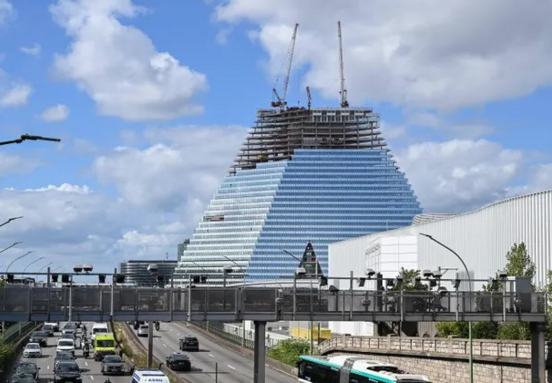1. Location: the ultimate value driver for your business premises
The location of a professional property is a decisive factor in its value and suitability. A dynamic and well-maintained neighborhood positively influences perception, ensuring stable, even growing, value over time.
Remember, the environment impacts your company's image; you're not just seeking square meters, but a real user experience for your employees.
Neighborhood environment
An attractive neighborhood offers numerous services and amenities:
- Local shops
- A wide range of restaurants, cafés, and cafeterias
- Parks and green spaces
- Varied services: parking, concierge, gym, cultural spaces
Tip: If the building itself doesn't offer these services, highlight those available in the immediate vicinity or neighborhood.
Premium vs. emerging districts
Two main approaches define your choice of office district:
- Premium districts offer stable value due to their city-center location where office demand is strong.
- Emerging districts present strong potential for future appreciation, but their peripheral or urban rotation location implies a more speculative and riskier position.
Accessibility matters
Accessibility primarily relies on immediate proximity to public transport: metro, RER, train stations, bike-sharing services, and other conveniences. This is a decisive asset when choosing office locations, especially in congested metropolitan areas.
Good accessibility fosters:
- Increased attractiveness for companies in the job market.
- Improved quality of life for employees.
- A secure property value in a competitive market.
2. Targeted renovation: a measurable asset for your business
Every expense counts! The budget invested in renovation should be viewed as a value-enhancement lever for the property you choose to lease.
The impact of upgrades and compliance
Improvements have an immediate impact on first impressions during visits: fresh paint, well-maintained flooring, or modern lighting. Energy performance is a decisive criterion: a good Energy Performance Certificate (DPE), double glazing, or reversible air conditioning can make a significant difference. Compliance with ERP (public access building) standards and updated IT cabling (fiber optic, RJ45 sockets) also boost attractiveness for demanding professionals.
Prioritizing image optimization over heavy renovation
Heavy renovations are rarely profitable in the short term. Therefore, it's important to evaluate the return on investment before committing to a lease in a heavily renovated space. It's often better to look for targeted image optimization, focusing on visible details rather than structural overhauls.
A technical audit or property valuation can help prioritize valuable investments. The goal is to maximize the 'wow' factor while controlling costs, ensuring you get a space that feels fresh and modern without hidden burdens.
3. Space layout: the power of flexibility in commercial properties
While the raw surface area of a space is important, it's the quality of its layout that determines its true utility. Prioritize architectural elements that contribute to a sense of space and quality of life at work: high ceilings, natural light, and fluid circulation.
Modular Workspaces for Modern Needs
Businesses primarily seek adaptable layouts that can evolve with their needs. They favor properties that lend themselves to modularity to offer future occupants an evolving, functional, and pleasant work environment. An unfurnished space can be appealing if it offers strong potential for flexible, tailor-made layouts, including:
- Bright open spaces
- Partitioned zones for meetings
- Phone booths
- Dedicated areas for various company projects
Well-designed common areas
The trend is towards fun and well-thought-out common areas! They play a strategic role in the value and appeal of a commercial space.
In practice, look for properties inspired by tech giants, featuring:
- A well-maintained reception hall with a barista coffee or smoothie bar.
- A convivial kitchen.
- A modern, healthy canteen.
- Modern restrooms.
- Original areas for games and relaxation.
4. Legal and regulatory compliance: essential for a secure lease
Playing the card of trust with your future landlord is key! Whether it's a commercial lease, a short-term lease, a coworking agreement, or managed offices, legal and regulatory compliance is indispensable to ensure the property's value and suitability in the real estate market.
Ensuring a compliant commercial lease
To facilitate a smooth and secure lease of a business premises, verify:
- The validity of the lease contract.
- Its consistency with the actual use of the premises.
- Specific co-ownership rules: ensure no gray areas in charge calculations or the implementation of general assembly decisions.
Property adapted to business needs
Pay close attention to mandatory diagnostics: DPE (Energy Performance Certificate), asbestos, electricity, lead, etc. They must be valid and complete. Clear and comprehensive documentation not only speeds up the leasing process but also secures the transaction, making it a key value indicator in the market.
Important: If the business is an ERP (établissement recevant du public - public access building), the premises must comply with accessibility and safety obligations.
5. Professional real estate market trends for 2025
Staying ahead of market trends ensures your chosen office space remains relevant and efficient for years to come.
Flexible office spaces
Modular spaces hold superior value in the real estate market. They appeal to businesses seeking responsiveness and simplicity:
- Offices that are easy to divide.
- "Plug & play" ready-to-use spaces.
- Hybrid surfaces compatible with both individual and team work.
Company brand image
The workspace significantly contributes to a company's brand image. To attract young talent or embody a modern brand, the professional environment becomes a communication tool in its own right.
In practice, here are some suggestions for enhancing a property's attractiveness:
- A refined design.
- A welcoming reception.
- Unique furniture.
- Greening of spaces.
- The presence of a terrace or even a rooftop.
Energy performance
Another key criterion for choosing a business premises: energy performance. It reassures occupants about the building's quality, allowing the company to:
- Control energy expenditures (lighting, heating, air conditioning).
- Meet its CSR (Corporate Social Responsibility) objectives.
- Embody a sustainable premises in the long term.
In practice, look for properties with:
- Good building insulation.
- Intelligent consumption management.
- Environmental labels: HQE, BREEAM, BBC, etc.
Conclusion: anticipate the needs of your future occupants!
Behind every good office space lies research, anticipation, and value enhancement. Each of the criteria discussed can either facilitate or hinder your business's optimal use of the space.
Therefore, leveraging insights from commercial real estate professionals can help you identify properties that are not just suitable, but truly optimized for your business needs.
Source: spliit.fr







